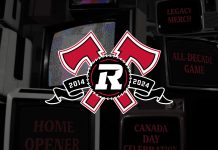By Paul Fooks
Special to Ottawa Construction News
The summer season is drawing near and the use of propane will increase at home. Propane is also used in the workplace for torches, tar pots, dryers and heaters or with forklifts and elevated work platforms.
Propane can be safely used in many appliances but there are a few things that must be understood to reduce the risk of fire or explosion. Propane cylinders are Transport Canada approved, which allows filled propane cylinders to be transported by Transport Canada Regulations. In Ontario, propane cylinders must be transported in an open vehicle with the Danger labels visible and with no more than five cylinders.
Above this number of cylinders you require TDG training, a shipping manifest, and placards on the vehicle. Cylinders must also be less than 10 years old and not be rusted, dented or gauged to be serviceable. Storage of cylinders is also regulated as well at home and at work. Propane cylinders cannot be stored inside a house, shed, garage or dwelling. They must be stored outside.
On construction sites there are also regulations for propane cylinders in storage. Cylinders will be secured upright, the valve closed, a cap on the inlet and full tanks separated from empty. There are also requirements to protect from vehicular movements, and distances from flammables, combustibles, sources of ignition and mechanical air intakes.
The appliance becomes the next topic for discussion. Each appliance will be fitted with a regulator that is installed during manufacture. These are designed to deliver the correct fuel pressure and volume for the appliance for efficiency. Without a regulator, an appliance will receive pressure that is dangerous to operate. Do not operate without an approved regulator. Your home barbeque has a regulator as well.
Propane tank exchange procedures for appliances or vehicles are different so refer to the owner’s manual for each appliance. The procedures are fairly basic. Set the tank in place, secure it, attach the coupling connector, hand tight or with a fitted wrench as appropriate. Open the valve slowly and then perform the leak check using soapy water or leak tek. If there are no leaks, proceed with the start procedures and start the appliance or vehicle.
If your appliance does not seem to flow gas, or the flow is really low you may have tripped the excess flow check valve. This feature reduces gas flow in the event of a cut hose. It can sound like a light tick as you open the valve. Simply close the valve, wait one minute and open the valve slowly. You should be reset to full flow.
Get the covers off the BBQs and safely get cooking.
Paul Fooks is Labor Tek Safety Training Inc.’s head trainer. For more information, visit www.labortek.comor phone (613) 741-1128.






